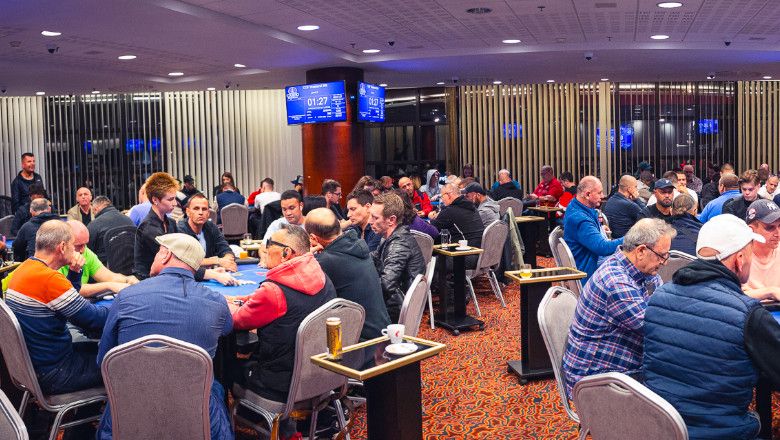29 days to London – Meet Swedish player Andreas Löf Nilsson
March 1, 201619 days to London – Meet Jostein Grødum
March 11, 2016
6-card PLO with 3 boards Rules
This is a poker variant that possibly originated from the infamous mid stake cash games spread in Estonia in the Dealers Choice tables known as “Anything Goes”. A bit of background might be needed. Back in 2004 when the Olympic Casino in Tallinn started to offer dealers choice as a cash game format the games of choice where limited to NL Texas, Limit Texas, PLO, PLO high/low and 7 Card stud. Over the years the casino introduced more and more games as well as then printing more and more unique dealer buttons with each game name printed on them to help the players and the dealers to identify the game of choice at any given hand.
Fast forward to 2013 and all of a sudden the casino had an amazing 25 preprinted dealer buttons with the most popular game names and variants of them printed in clear text and using a color scheme of the buttons from all colours of the rainbow. At a late night session, a local player suggested: “Hey, let’s skip using this huge stack of dealer buttons and instead just use the classic and non-descript DEALER button and once you are in position for game selection just tell the game you want to play, if needed walk through the rules and once all understand the rules, let’s play it” thus the birth of SUPER-DC or also known as “Any Game Goes”.
New and crazy games were introduced or even invented, games that included specific joker cards, differentiated betting structures, exchanges of cards between players based on a pre-defined pattern or why not just all the cards on your forehead like old classic indian poker when you see everyone elses card except yours… Anyway, a few of these crazy games actually became quite playable and also followed the structure and logic of any other games that are popular and spread out there in the poker world. Here we will introduce you to one popular variant called “6-card PLO with 3 boards”
6-card PLO with 3 boards Rules
Possibly origin Tallinn, Estonia with the main purpose of the game to increase the variance of PLO but still keep the logical elements of the games and thus able to separate luck from skill.
In short, the game is classic PLO with six-cards dealt to each player but with three boards. The game is point based as in once showdown is reached the dealer will identify the winning hand on each of the three boards, if any player is the unique winner of two of the boards than this player scoops the pot. There are possibilities of split pots between players due to player A winning the top board and player B winning the bottom board while both of the have an equal hand on the middle board. Another example of a split pot is where three players have reached showdown and player A wins the top board, player B the middle board and player C the bottom board. In these cases just chop it up and start dealing next hand. The possibility for a split board is there but not as common as you might think, instead based on betting pattern people tend to avoid showdowns since the handstrenght needs to be very solid on MINIMUM two of the three boards to be able to scope the pot. 6-card PLO with 3 boards is a great action game with a standard international 52-card deck is used. The optimum number of players is 5 and the cap of players dealt is 6. As in any form of poker, the cards are shuffled and cut. The structure when it comes to blinds, order of betting and the way the communal cards are dealt are identical to ordinary Texas Hold’em and Omaha except that there are only one (1) burn cards used and that is before dealing the three flops that opens the three boards.
Game dynamics:
1) After small and big blind are posted the dealer deals sixcards to each player, and then there is the first betting round.
2) Dealer burns one (1) card and deals three parallel three-card flops face up for the table and then there is the second betting round.
3) After the second betting round the dealer (without any burn card) deals the three turn cards, as in one per board face up and then there is the third betting round
4) once the betting round is completed the dealer (without any burn card) deals the three river cards, as in one per board face up and then there is the fourth and final betting round.
5) Show down
If any betting round results in all players but one folding, the last surviving player immediately takes the pot without showing any cards, and this ends the hand.
If more than one player is still involved after the final round of betting, all players show their cards, and the winner of the pot is declared.
- The player that scores 2 points or more (as in winning at least two boards) is awarded the pot
- If players scores equal points the pot is split accordingly
Normal poker hand ranking applies.



